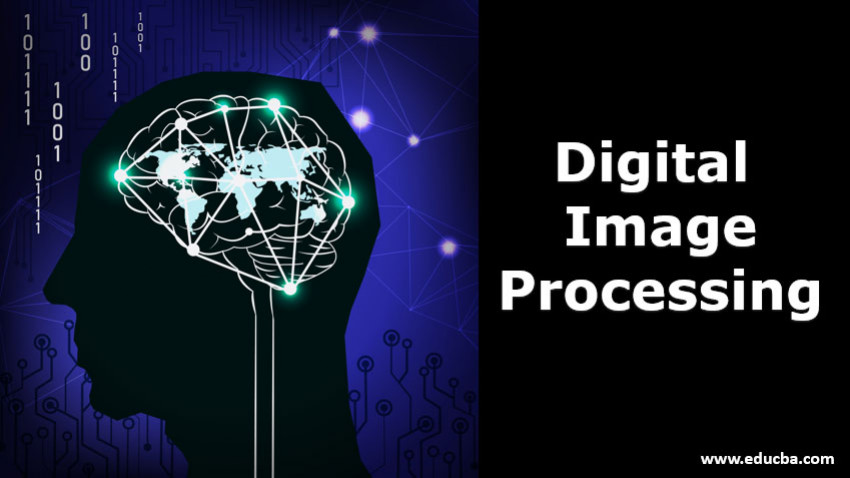
Understanding Image Processing
The process of converting an image into a digital format and carrying out specific procedures to extract some usable information from it is known as ‘image processing’. When implementing certain specified signal processing techniques, the image processing system typically interprets all pictures as 2D signals.
Digital computers are used to manipulate images during digital image processing. In the previous few decades, its use has grown astronomically. From remote sensing and geological processing to entertainment and medical, it has a wide range of uses. Digital image processing is a key component of multimedia systems, one of the foundations of the contemporary information society.
Digital image processing is a broad field that includes both general image processing methods and methods particular to digital signal processing. A function f (x, y) of the two continuous variables x and y can be thought of as a picture. It has to be sampled and converted into a matrix of integers in order to be handled digitally. Quantization is required in order to represent numbers digitally since computers only have finite accuracy. These limited precision values are modified during digital picture processing. Image enhancement, picture restoration, image analysis, and image compression are some of the several categories that make up digital image processing.
A picture is altered in image enhancement, typically using heuristic methods, so that a viewer can make sense of it. The goal of image restoration approaches is to process degraded pictures where the deterioration can be described statistically or mathematically and then undo it. Using image analysis techniques, information may be automatically retrieved from a picture after it has been processed. Image segmentation, edge extraction, texture analysis, and motion analysis are a few examples of image analysis.
Image processing may be divided into five categories:
- Visualization - Look for things that are hidden in the picture
- Recognition - Identifying or detecting items in the picture
- Sharpening and restoration - From the original, produce an improved image
- Pattern recognition - Measure the numerous patterns surrounding the items in the image to identify patterns
- Retrieval - Search and browse through photos in a sizable library of digital photos that are comparable to the source photo.
Advantages of Image Processing
Many IT businesses have had a significant effect as a result of the use of image processing technology. Regardless of the industry, the following are some of the most helpful advantages of image processing:
- Any chosen format for the digital image can be made available (improved image, X-Ray, photo negative, etc)
- It enhances visuals for easier human comprehension.
- Images may be processed to extract information for automated interpretation.
- Any desired density and contrast may be achieved by manipulating the image's pixels.
- It is simple to save and retrieve images.
- It enables simple electronic picture transfer to third-party suppliers.
Applications of Image Processing
Medical Image Retrieval
Medical research has made substantial use of image processing, which has made treatment programmes more precise and effective. For instance, utilising a powerful nodule identification algorithm in breast scans, it can be utilised for the early diagnosis of breast cancer. Since medical applications demand highly skilled image processors, these programmes must undergo extensive implementation and testing before being approved for use.
Traffic Sensing Technologies
There is employed a video image processing system, or VIPS, for traffic sensors. An image capture system, a communications system, and an image processing system make up this. A VIPS has a number of detecting zones that, while recording video, emit a "on" signal whenever a vehicle enters the zone and a "off" signal when it leaves. These detection zones may be configured for numerous lanes and used to monitor the flow of traffic at a certain station. In addition, it can identify the kind of car, automatically record the licence plate, track the speed of the driver on the highway, and do a lot more.
Reconstruction of Images
A picture's missing or damaged portions can be repaired and filled in using image processing. In order to produce newer copies of outdated and damaged photographs, image processing algorithms that have been thoroughly trained with existing photo datasets are used.
Face Recognition/Detection
Face detection is one of the most frequently used image processing techniques in use today. The computer is initially educated with the distinctive characteristics of human faces, such as the form of the face, the spacing between the eyes, etc., using deep learning techniques. After the machine learns these characteristics of a human face, it will begin to recognise any objects in a picture that resemble a human face. Face detection is a crucial technique used in security, biometrics, and even filters accessible on the majority of social networking platforms nowadays.
Conclusion
The fast acceleration of computer vision in open source projects brought on by the development of deep learning technologies has only raised the need for image processing tools. Every year, there is a sharp increase in the demand for experts in deep learning technology. Skillslash is a good choice and a reputable ed-tech platform if you want to learn more about the advantages of deep learning and image processing. Students and enthusiasts can approach Skillslash, as it provides them with training in Data Science course in Bangalore, image processing, and many other fields so that they are prepared to put their knowledge to use in the real world. With features like a 100% job guarantee, real-world work experience, customizable courses, training to land a job at a top tech company or one of the FAANG businesses, project certification from leading startups, etc. As a result, one may have faith in this burgeoning firm and its expertise in this field.


